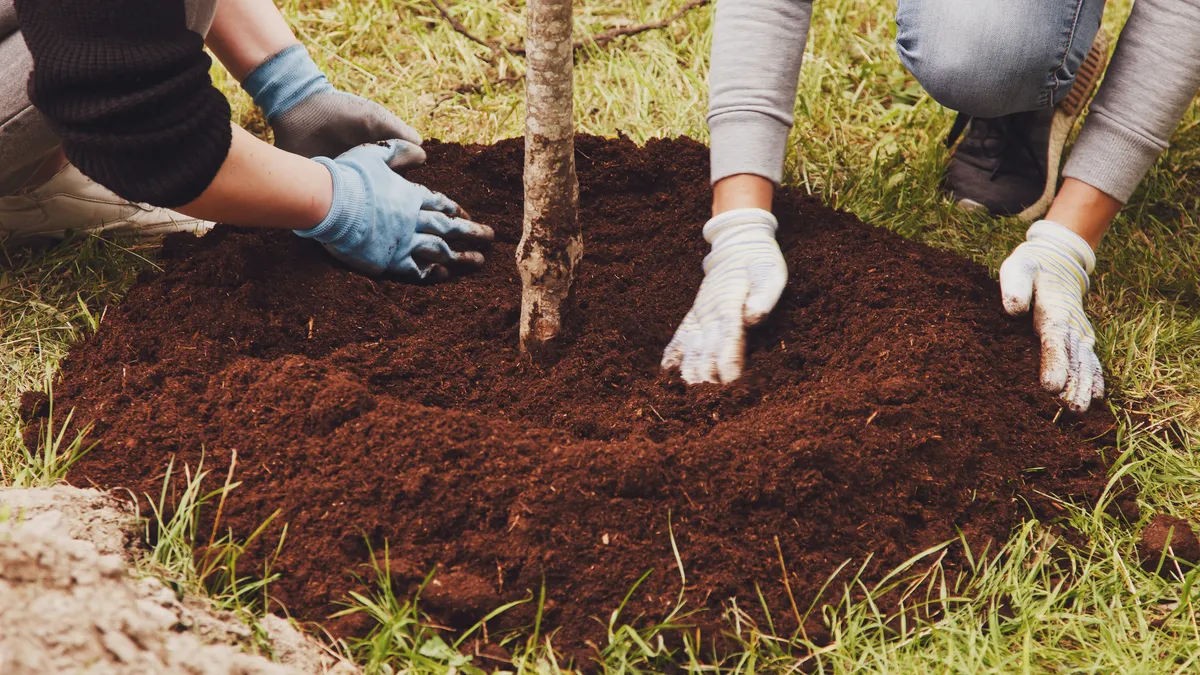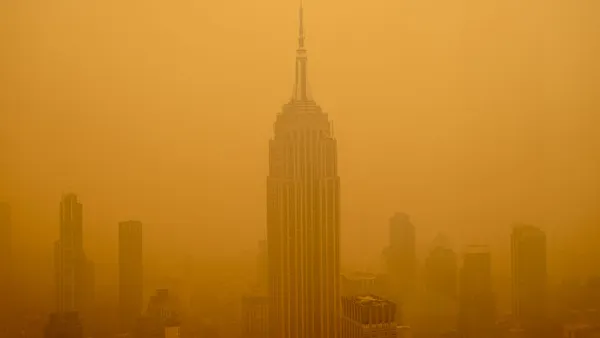Dive Brief:
- The Metropolitan Water District of Southern California is encouraging residents and businesses to plant “California-Friendly” and native trees on their property through a rebate announced March 5.
- The cooperative of 26 cities and water agencies will now give people $100 per tree planted in their yards, up to five trees per home or business, as part of an existing program that offers incentives for property owners to replace grass lawns with drought-tolerant landscaping.
- The tree rebate draws on best practices from similar programs in Albuquerque, New Mexico, and Portland, Oregon, said Krista Guerrero, a resource specialist at MWD. One of the most helpful pieces of advice she got from speaking with these communities is to ensure the trees the program supports align with intended goals. “Not all trees are created equal,” she said.
Dive Insight:
Trees provide a slew of ecosystem services, from providing shade to trapping rainwater. That’s why communities nationwide are relying on trees to help protect them from hotter summers, more frequent intense storms and longer droughts driven by climate change.
Many localities are planning ambitious tree-planning projects; the MWD’s rebate is an example of how to encourage private property owners to get in on the effort, too. Rebate participants are expected to purchase and plant the trees themselves, although the water district created a guide to tree planting and maintenance.
To be eligible for the rebate, trees must be at least 15 gallons, in terms of the size of the container holding the tree for sale, which is a proxy for the tree’s size. That’s two to three sizes up from the smallest trees one can typically purchase at a nursery, Guerrero said. The $100 rebate is the sweet spot in the price range for such trees, which usually cost between $80 and $120, she said.
The district created a list of tree species they’d prefer that people plant, opting for species that don’t require too much water and have high stormwater retention and air quality benefits, Guerrero said. The district also considered the tree’s canopy size, she said, since that’s what provides the desired urban cooling effect.
Fruit trees qualify for the rebate but only when planted on residential properties. “We do want to acknowledge that people want to be able to grow their own food, particularly in underserved communities, where there may be food deserts,” Guerrero said. Some trees, like those that use a lot of water, pose high fire risk or are disease-prone, are not eligible for the rebate program.
Within a day of announcing the tree rebate, the district received several applications. “There were definitely people waiting,” Guerrero said.
The tree rebate is a new addition to a turf replacement program that has helped property owners replace 218 million square feet of “water-sucking” lawns with sustainable landscapes, the district says, which has saved enough water to serve about 68,000 homes each year.
That doesn’t include what Rebecca Kimitch, the water district’s press office manager, called the “multiplier effect”: When one person in a neighborhood replaces a lawn, it influences others to do the same. The district estimates that for every 100 landscapes for which it provides a rebate, another 134 lawns are replaced without rebates.
“We're really changing how people think about their landscapes in Southern California,” she said. “It doesn't have to be this sprawling lawn.”












